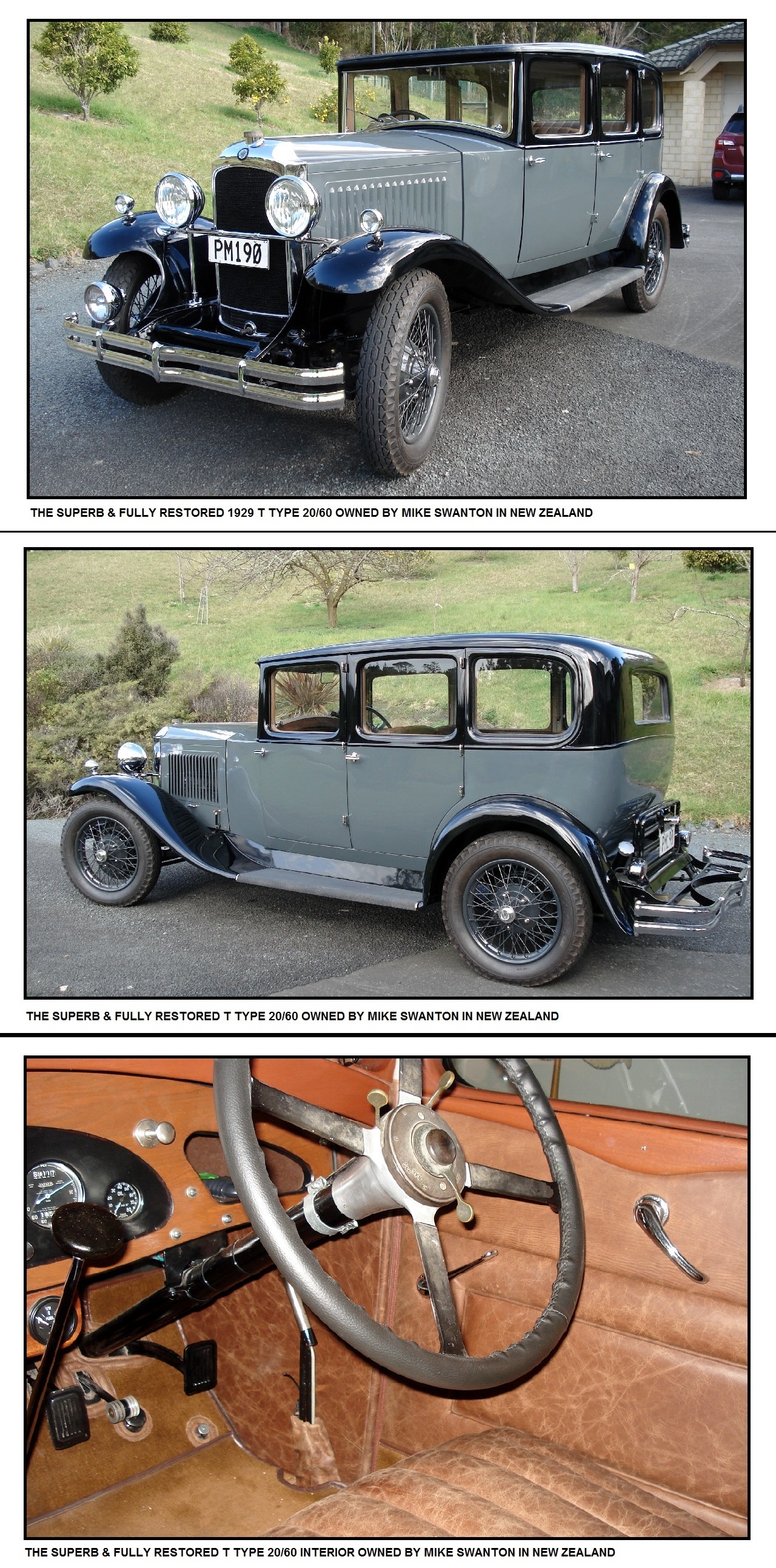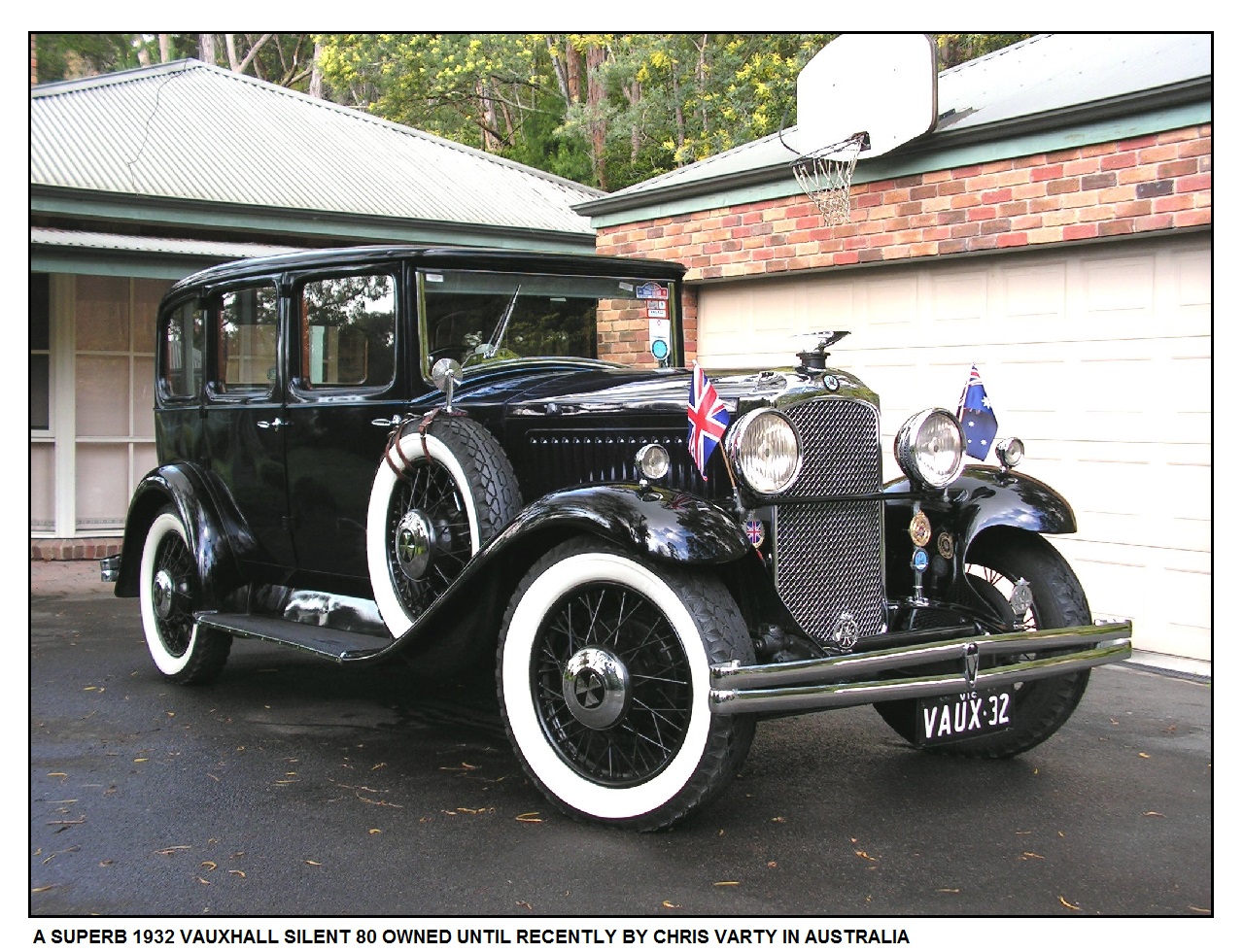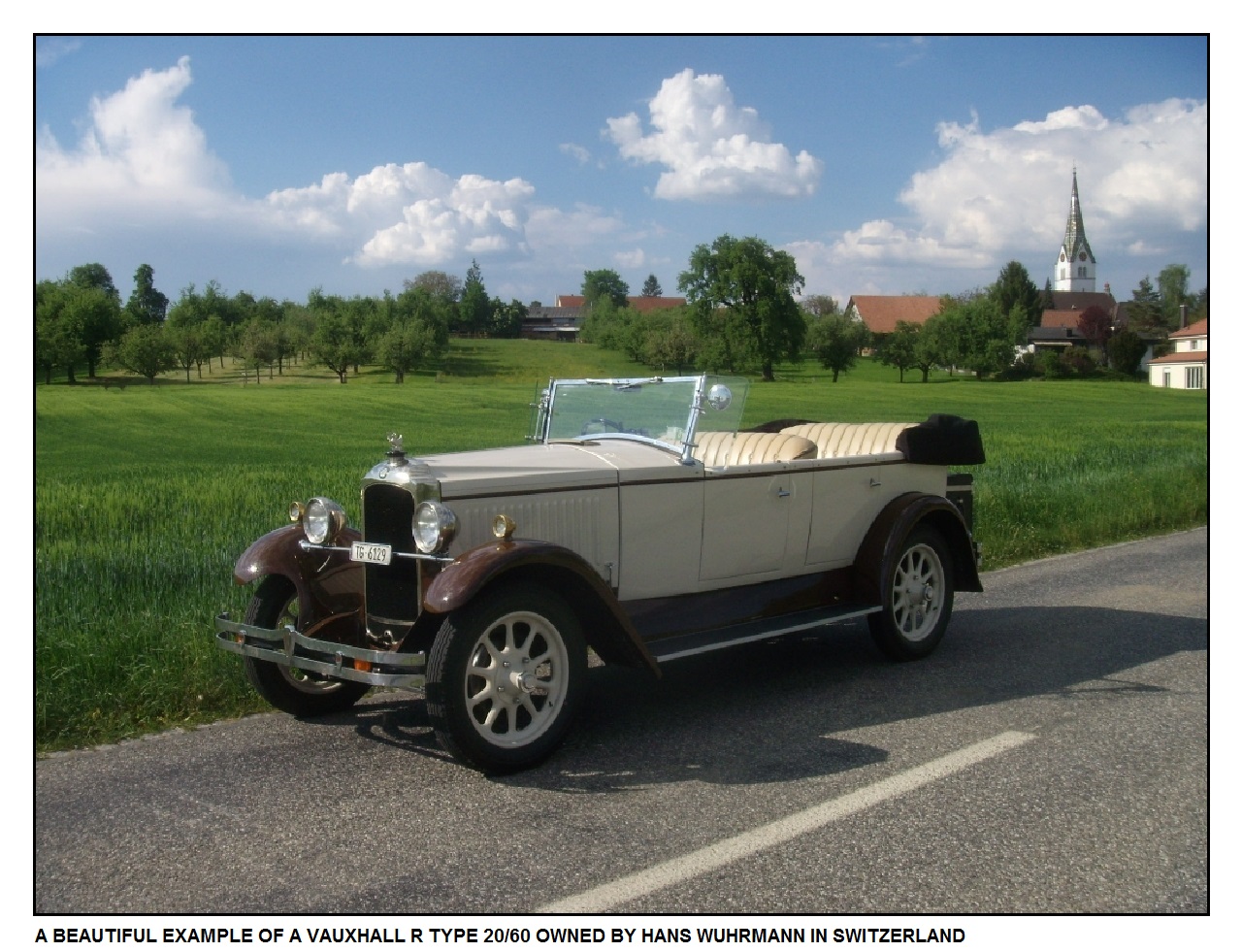
WITH THANKS TO MIKE SWANTON & ESPECIALLY LEIGH WHITFIELD FOR THEIR ASSISTANCE & DONATION OF SOME OF THE MATERIAL IN THIS SECTION OF vauxpedia.

1. VAUXHALL R & T TYPE - 20-60, T 80 & SILENT 80 BACKGROUND:
By the early 1920s Vauxhall were an established and well respected producer of quality cars in a similar vein to Sunbeam and Humber, although they lagged behind in some areas such as using side valves instead of overhead and front and not all wheel braking. However, Vauxhall were like their competitors in that they all suffered from a common, and fundamental, problem; the low productivity which prevented price competition with producers such as Morris, Austin and Ford, which had massively intensified in the early 1920s. An attempt to remedy this was made by Vauxhall early in the decade by reorganising the Luton factory in a half-baked attempt at an assembly line but only for the fitting of engines and chassis ancillaries. Despite this, production was still hopelessly slow compared to the full mass production techniques used by the largest producers such as Ford and Austin. In 1925 Leslie Walton, Company Chairman, stated that Vauxhall was not equipped, trained or had any desire to produce large quantities of mass produced cars and would continue the policy to produce a “reasonable” number of high class cars at a “moderate” price. In any event Vauxhall did not have the capital available at the time to make the huge investment that mass production would have involved. The prospect was also looming in 1925 of the redemption of £300,000 Short Term Notes taken out in 1920 to keep Vauxhall afloat and, in addition to large bank overdrafts, meant the financial standing of the Company was beginning to crumble. Walton called a special shareholders meeting where he stated that the improvement in profitability for the previous two years was not enough to reduce the overdrafts or set aside funds for payment of the Short Term Notes. The company was backed into a corner and as a result it was proposed to create and issue First Mortgage Debenture Stock for the sum of £350,000, this effectively meant mortgaging all of Vauxhall’s fixed capital and assets. The shareholders had already seen the capital reduced from £600,000 to £300,000 by writing off 10/- shillings on each share in 1923 and none had received a dividend since 1919. However, the shareholders had no real choice because if they failed to accept the offer Vauxhall Motors Ltd would go into liquidation. Meanwhile, General Motors Overseas Operations (GMOO) had felt sufficiently confident in the British car market that it had set up an assembly plant in 1920 at Hendon Aerodrome to build cars from imported CKD (Completely Knocked Down) kits from the US, these included Buicks, Cadillacs, Chevrolets, La Salles and Oaklands. CKDs were used because a lower import tax was levied compared to importing complete vehicles giving GM an advantage over other imports. The operation did suffer from the same round of competitor price cuts of 1921 and the growth in low price models from Morris, Ford and Austin cut GM sales. In 1924 a survey was conducted by GMOO head James Mooney and clearly pointed to the tax on engine size, insurance and servicing costs placed the cheapest Chevrolet at a £112 disadvantage compared with the equivalent Austin, not much in today’s money but a huge difference at the time.
This was the incentive for General Motors to give the go ahead to GMOO to seek the acquisition of a British manufacturer, in the meantime the Hendon plant was turned over to the production of Chevrolet trucks with locally built bodies, and it was this vehicle that was later to form the basis of the first British built Bedford truck.
After assessing all their requirements GMOO chose Austin as being the ideal operation to take over. Negotiations started in 1924 and were initially favourable, Herbert Austin was amenable as his company was having difficulties in raising capital for its own expansion plans but there was always the backdrop of criticism from the national and motoring press which resented the prospect of well-known British companies passing into American hands. After months of deliberations in early October 1925 the plan was scotched by dissenting Austin directors who opted for a more modest expansion plan rather than relent to American ownership.
Wasting no time, on 21 October 1925 negotiations started with Vauxhall Motors Ltd. The issue of the First Mortgage Debenture Stock for the sum of £350,000 at 7% had not been very successful and the Vauxhall Board was more than willing to entertain GMOO’s offer of $2,575,291 for the purchase of the ordinary shares. This enabled the 300,000 ordinary shares to return to their pre 1923 value of £1 each, former shareholders also had the option of purchasing up to 300,000 preference shares at £1 each with a guaranteed dividend of 6%. Old ordinary shareholders were paid a bonus of £210,000 which combined with the above made a total of £510,000 invested in Vauxhall. The deal was agreed in principle within days of talks starting and was completed in full on 24 November 1925, through Morgan Grenfell, GM’s Merchant Bankers, who had also dealt with the Austin proposal.
A new 7-man board of directors was appointed on 16 November 1925; 4 British - Leslie Walton remained as Chairman and joint Managing Director, Percy Kidner as joint Managing Director, and Board Directors Mr Bisgood and Mr Petch; 3 American Directors were appointed – James Mooney, also head of GMOO, Edward Riley assigned from the GMOO Hendon operation and Alfred Swayne from GMOO headquarters in Detroit. Within General Motors in the US the deal received a less than favourable reception and vociferous disagreements over Vauxhall continued until 1928, major policy decisions were delayed by Alfred Sloan, GM President, who wanted to move cautiously until a clear policy had been worked out for all overseas operations. This caution did not stop GM trying to purchase Morris Motors Ltd for $11 million in 1926, but again they were rejected, and then to compound matters GM entered into an auction with William Morris and Herbert Austin for the bankrupt Wolseley Motor Company: Morris won that battle.
There were plenty of GM insiders who thought that a manufacturing presence in Europe was not needed at all but an added complication was the acquisition of Adam Opel in Germany on 30 March 1929. The strategy was the two companies would both compete with each other in the same way that GM divisions worked in the US but Opel would be the base for European manufacturing and Vauxhall for Britain and the Empire which at the time covered 38% of the world. Unfortunately, financial losses at Vauxhall for 1927, 1928 and 1929 did not help Vauxhall’s case but the depression that followed the Wall Street Crash and foreign countries putting up heavy import tariffs gave General Motors an advantage with Opel and particularly with Vauxhall and their Empire territories.
What was to have a profound effect on Vauxhall was the attitude of the press towards the Company after the takeover by GM. Most vociferous was Edmund Dangerfield the editor of “The Motor”, his attacks resulted in a double page advertisement in the magazine entitled “The future of Vauxhall Motors” which emphasised that it would remain a 100% British institution and the Managing Director, Chairman, staff, workmanship and product were British. Significantly it was only signed by Walton and Kidner. This did not stop the criticism and Vauxhall ended up withdrawing all advertising and loan of test cars for nearly two years. This atmosphere also dictated that the GM connection was not mentioned in any Vauxhall advertising and sales promotion for several years.
GM felt it was wise under these circumstances to have British nationals as the main company figureheads but despite this Mooney was anxious to have a senior GMOO man “on site” to this end he appointed Bob Evans as joint Managing Director with Kidner while Walton remained as Chairman. This proved a disaster and Kidner resigned in 1928 leaving GM in the rather unenviable position of having an American in the MDs chair.
Once the decision had been made for Vauxhall’s expansion Sloan personally told Mooney to pick an Englishman to run Vauxhall, the choice was an inspired one, Charles Bartlett was MD of the GMOO Hendon operation and was quintessentially British and so in 1929 he was appointed sole MD of Vauxhall.
2. VAUXHALL R & T TYPE - 20-60 T80 & SILENT 80 DESIGN & ENGINEERING:
Being the first new car to be launched by Vauxhall following the takeover by General Motors, much has been made of the 20-60 design being based on the American Buick Standard Six Sedan which used the new B Platform first introduced in 1926. Interesting as this may be it is totally unfounded, there certainly were GM influences at work prior to, and even after, the launch of the 20/60 but none of it had anything to do with the body design. The plans for the car were already laid down at the end of 1924 and was originally scheduled to be introduced in October 1926, this plan fell apart as a result of inept management, hopeless cost control and a physical lack of cash flow which was compounded by the unbelievable decision to give the development & launch of the 25-70 an absolute priority over everything else.
Like many of its contemporary British rivals, Vauxhall did not have a dedicated design or styling department. Instead, the exterior body design process was intertwined with the main engineering drawing office where perhaps 2 or 3 draftsmen would be singled out as having a talent or flair for a cars appearance, one such man was Arthur Bratchet who would later work in the dedicated Styling Department set up by the sculptor Eric Kennington. Kennington was often used on a consultancy basis during the 1920s before being fully employed by Vauxhall. Charles E King had replaced Laurence Pomeroy as Chief Engineer at Vauxhall in 1919 and he would certainly have been heavily involved in the 20-60 design and would have given the final approval & sign off. So it is safe to say the 20-60 was a wholly British design.
In terms of chassis and mechanical engineering the 20-60 followed the Vauxhall custom & practice of conventional, sound and well proven principles designed and built to a very high standard - which makes the 25-70 disaster even more surprising. The smooth 2762cc 6cylinder engine used a cast iron block which also incorporated the crankcase, the overhead valves were operated by aluminium rockers and steel push rods with double valve springs and an aluminium rocker cover. Pistons were cast iron with 3 rings, one of which was a scraper ring, attached to a dynamically balanced high tensile drop forged steel crankshaft which was supported on 9 main bearings instead of the more normal 7. Crankcase ventilation was via a breather in the oil filler cap. The drop forged steel camshaft was case hardened, supported by 3 bearings, and was chain driven in tandem with the dynamo. Ignition advance & retard spark timing was controlled automatically with the distributor positioned at the back of the engine and drive taken off the camshaft, all electrical components were Lucas 12volt. Inlet and exhaust manifolds were mounted on the right hand side of the block with the inlet manifold featuring a 2 branch mixing chamber using a V shaped casting inside heated by the exhaust. Fuel feed from the rear mounted 14-gallon tank was achieved using an Autovac tank on the dashboard, the carburettor was a Claudel Hobson with built in power jet. Lubrication was pressure fed by pump with an overflow system for the timing chain & sprockets. The cooling system was regulated by a thermostatic valve. Engine, clutch and gearbox were assembled as one unit and mounted at three points. The single dry plate clutch has a central external spring and roller spigot bearing, the gears were changed by a central floor mounted lever. The suspension was by half-elliptical springs front and rear, those at the rear were underhung. The front springs were flat-set, held out-of-centre and shackled forward, dampers were fitted front and rear with steering by Marles cam and roller.
With investment from General Motors the 20-60 could probably have been launched on schedule, however preliminary examination by GM engineering staff seconded to Luton were horrified by the proposed braking system. Although Vauxhall had built up a reputation for quality engineering over the years it didn’t include brakes which were always a weak point. With the 20-60 the situation had reached a new low with a proposed system which, despite using a myriad of rods and linkages, were still hopeless. GM changed the design completely to cable operated four-wheel braking with a central mounted handbrake lever operating a band transmission brake mounted directly behind the gearbox, the band could be adjusted by a threaded rod. Drive was via an open propeller shaft using a flexible fabric universal joint at each end to the semi-floating spiral-bevel rear axle.
The General Motors influence didn’t stop with the brakes, it continued after the 20-60 launch. GM in the US had already started a convention whereby a car would be updated every year in order to maintain interest in a model and to boost sales. Vauxhall would not normally significantly change a car during its production run, something that clearly became a problem in the 1920s, with the 20-60 there were updates every year and was a clear sign that GM were influencing decisions taken by Vauxhall.
3. VAUXHALL R & T TYPE - 20-60, T80 & SILENT 80 MODEL HISTORY:
VAUXHALL R TYPE - 20-60:
The Vauxhall R Type 20-60 was announced on 28 September 1927 and was given its first public showing at the Olympia Motor Show. It was seen by the motoring press as a cautious move slightly down market for the Company, being the first 6 cylinder Vauxhall to be offered for sale for less than £1000. At the time it directly replaced the 14-40 range, but as all other Vauxhall models ceased production it soon became the only car Vauxhall would build for almost the next 4 years. This gap in Vauxhall's model programme may have been a result of the costly development of the 25-70 with its sleeve valve engine which was a complete sales failure, it was the wrong car at the wrong time. It is likely that if GM had not taken control of Vauxhall the Company would probably have gone out of business by the end of 1926.
The 20-60, launched as “The Motor Car of Basic Balance” but soon changed to “The six superexcellent”, was available as a 4/5 seat factory produced Princeton Tourer for £475 or the Bedford Saloon for £495, in addition it could be had as a rolling chassis in order for a multitude of different specialist coachbuilders, such as long established names like Grosvenor, to offer their own bespoke body designs which included Sports Saloons, Limousines, Tourers or Coupe / Cabriolets - these ranged in price up to £735. All came with the same 2.7litre six-cylinder engine and four-speed gearbox with a central floor change. Rather ugly artillery style wheels were standard but more stylish wire wheels were available as an extra cost option. On paper replacing the 4cylinder 14-40 with a better specified 6cylinder car for a similar price seemed a winning formula although due to the eccentricities of the British car taxation system the 20/60’s engine was just 435cc larger yet the RAC tax rating went from 14 to 19.83hp with a considerable jump in annual cost (£20). Despite this the 20-60 was universally acknowledged as offering a great deal of well-engineered and high quality motoring for a price that represented excellent value for money.
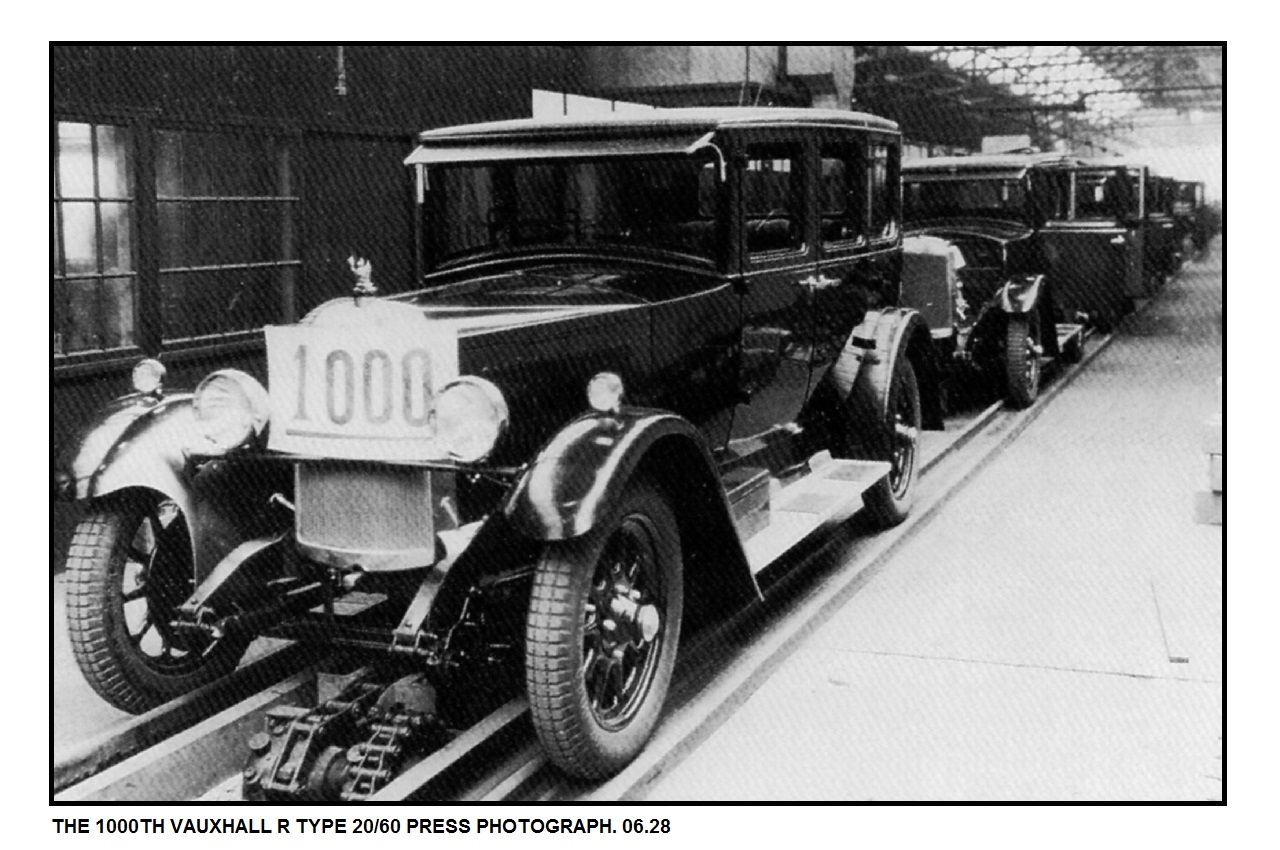
In October 1928 a revised R Type 20-60 was announced with many detail improvements which fully addressed the small number of criticisms levelled at the original car by the motoring press. The engine was slightly enlarged from 2762cc to 2916cc but gave a 25% increase in power as well as improved low speed pulling power largely the result of the use of aluminium pistons with greater tolerances and 3 separate piston rings, the head & combustion chambers were optimised, intake manifold and silencer were redesigned and the camshaft re-profiled. The crankshaft bearings were enlarged to meet the greater power output; smooth running was also enhanced by more critical crankshaft balancing. The annual taxation was only increased by £1 this time. The chassis was strengthened to reduce flexing and spring rates were revised to improve the handling & road holding whilst the steering was lightened by an increase in the ratio. Braking efficiency was slightly improved although the 20-60 already had better brakes than any previous production Vauxhall. Externally the revised models were distinguished by narrower & 2ins taller front grille and revised bonnet panels, higher mounted larger nickel finished headlamps and the new Triplex safety glass also became an option on all models. Since the takeover by General Motors in 1925 the association had been a contentious issue with the public and particularly the British press, as a consequence the link was never mentioned in any Vauxhall advertising until curiously, during 1929, the General Motors link was listed as a resource advantage along with the fact that Vauxhalls were made from 97% British parts & 100% British labour. The final change to the R Type models came in June 1929 with the launch of a long wheelbase chassis version in readiness for the new T Type launch in October.

VAUXHALL R TYPE - 20-60 SPECIFICATIONS - 12.27:

VAUXHALL T TYPE - 20-60:
Launched in time for the Olympia Motor Show in October 1929 the T
Type 20/60 models were available from the outset in two wheelbase
sizes – T 10ft 3ins & TL 10ft 10ins – and could be identified
by the more streamlined front wings and twin filament long range
headlights which were controlled by a dip switch in the centre of
the steering wheel. All bright work was now chromium plated. Most
of the T Type changes were mechanical and showed carefully thought
out improvements made following feedback from both dealers and
owners. The engine, now mounted on flexible rubber bushes, featured
7 instead of 9 main crankshaft bearings all with a larger surface
area than before, the crank pins were bored to reduce weight and
the exhaust manifold was now made in one piece. Specific crankcase
ventilation with a new higher level air cleaner combined with a
mechanical fuel pump driven off the camshaft were fitted. The
chassis frame was further strengthened and for the first time there
were 3 different rear axle ratios offered – T 4.73:1, T Sports
4.18:1 and TL 5.1:1. The suspension used longer rear springs and
hydraulic dampers, the fabric propshaft joints were replaced by
metal which were essential for reliability at higher shaft speeds.
Chassis lubrication was now possible by a one push plunger. Sales
of the T Type 20/60 tailed off considerably mid- season and were
mainly the factory produced
models.
VAUXHALL T YPE - 20-60 SPECIFICATIONS - 11.29:

VAUXHALL T - T80:
Announced in time for the October London Motor Show the 20-60 name was dropped from all the Vauxhall 1931 model year cars and replaced by the “Eighty” moniker which was derived from the cylinder bore size of the newly enlarged engine – 80mm – which was rather strange considering Britain, and GM in the US, universally used imperial measurements at the time.
The previous 20-60 engine was increased in size again, this time to 3317cc with an RAC rating of 23.8hp, and used larger valves with improved activation and an increase in compression ratio along with a triple roller timing chain. The engine was beautifully presented with the valve gear & spark plugs enclosed in water & dust proof aluminium covers. To cope with the additional power, the gearbox, transmission and rear axle were strengthened without any increase in weight which meant the chassis’ power to weight ratio was increased by 15% whilst also delivering improved fuel economy compared to the previous 20-60. New improved seating and interior trim was added along with battery warning light and a primitive form of reversing light. Just in case the owner forgot the position of the gears the Bakelite lever knob had “engraved” the positions of each one. The Eighty was available in two chassis sizes – 123ins & 130ins for the limousine version and all covered by a 1-year warranty (excluding tyres). Vauxhall didn’t quite claim to have adopted mass production but did claim that economies achieved by increased production resulted in savings being passed on to the customer, so the Eighty was cheaper than the 20-60 it replaced. Anyone familiar with the Luton factory at the time would be hard pushed to identify any savings gained from the chaotic process which was in the process of being properly adapted for mass production by General Motors.
The prices for respective models were as follows:
Vauxhall Eighty Princeton Tourer £485 (down from £595)
Vauxhall Eighty Richmond Saloon £495 (down from £530)
Vauxhall Eighty Velox Fabric Saloon £495 (down £565)
Vauxhall Eighty Melton 2 Seater £515 (down from £560)
Vauxhall Eighty Kingston Coupe £535 (down from £595)
Vauxhall Eighty Grafton Coupe £575 (down from £660)
Vauxhall Eighty Grosvenor Limousine £650 (down from £695)
VAUXHALL T - T80 SPECIFICATIONS. 06.30

VAUXHALL T - SILENT 80:
The final changes, for the 1932 model year, were announced in October 1931 and mainly aimed at improving the smooth running and refinement of the engine and transmission but the detail enhancements were somewhat overshadowed by the introduction of a synchromesh gearbox on the smaller Cadet which became the first British built car to use such a transmission. New rubber engine mountings, a new carburettor air cleaner design and a specially developed 3 blade fan replaced the previous 4 blade version, a revised & strengthened 4 speed gearbox with a so called silent constant mesh 3rd gear ratio and rubber body to chassis mountings went some way to justify the marketing name change to Silent Eighty. Inside, the same design of recessed armrests and rear seat centre armrest were used, blinds were provided for rear quarter windows, roof storage netting and improved front seats. Above the fully opening single pane windscreen a full width adjustable sun blind was fitted and as before a single, suction operated, windscreen wiper was used.
Externally, a stone guard was incorporated into the radiator design, glass visors fitted above the side windows and large plated hub caps provided for the now standard wire wheels which required a special tool to remove.
The Richmond was the standard factory produced saloon and offered for £485. All the other body styles and models were offered on the Silent Eighty chassis, available in short and 10ft10ins long wheelbase versions. The previous Hurlingham was dropped but a Kingston Sportsman’s Coupe was available for £495, the Cheriton Sports Saloon by Martin Walter for £640, Grosvenor offered the Velox semi panelled Saloon for £535, the Kimberley Saloon for £595, the new Newmarket Saloon on the LWB chassis for £685 and a full 7 seat Limousine with division for £695. The Vauxhall price for the chassis alone was £365 for the 10ft3ins SWB and £385 for the LWB.
Sales were minimal for all models, they were now cars out
of their time and the days of Vauxhall producing large almost
hand-made low volume, expensive, up market cars were drawing to a
close for good. In any event, the sector of the market Vauxhall had
occupied for so long was fast disappearing, it is doubtful that
Vauxhall made very much money out of the T 80 & Silent Eighty,
a case of an expensive car to make being offered for the price the
market dictated, which wasn’t enough.
VAUXHALL T - SILENT 80 SPECIFICATIONS 10.31:

4. VAUXHALL R & T TYPE - 20-60, T EIGHTY & SILENT 80 PRESS & PERIOD
PHOTOGRAPHS:
VAUXHALL R TYPE -
20-60:
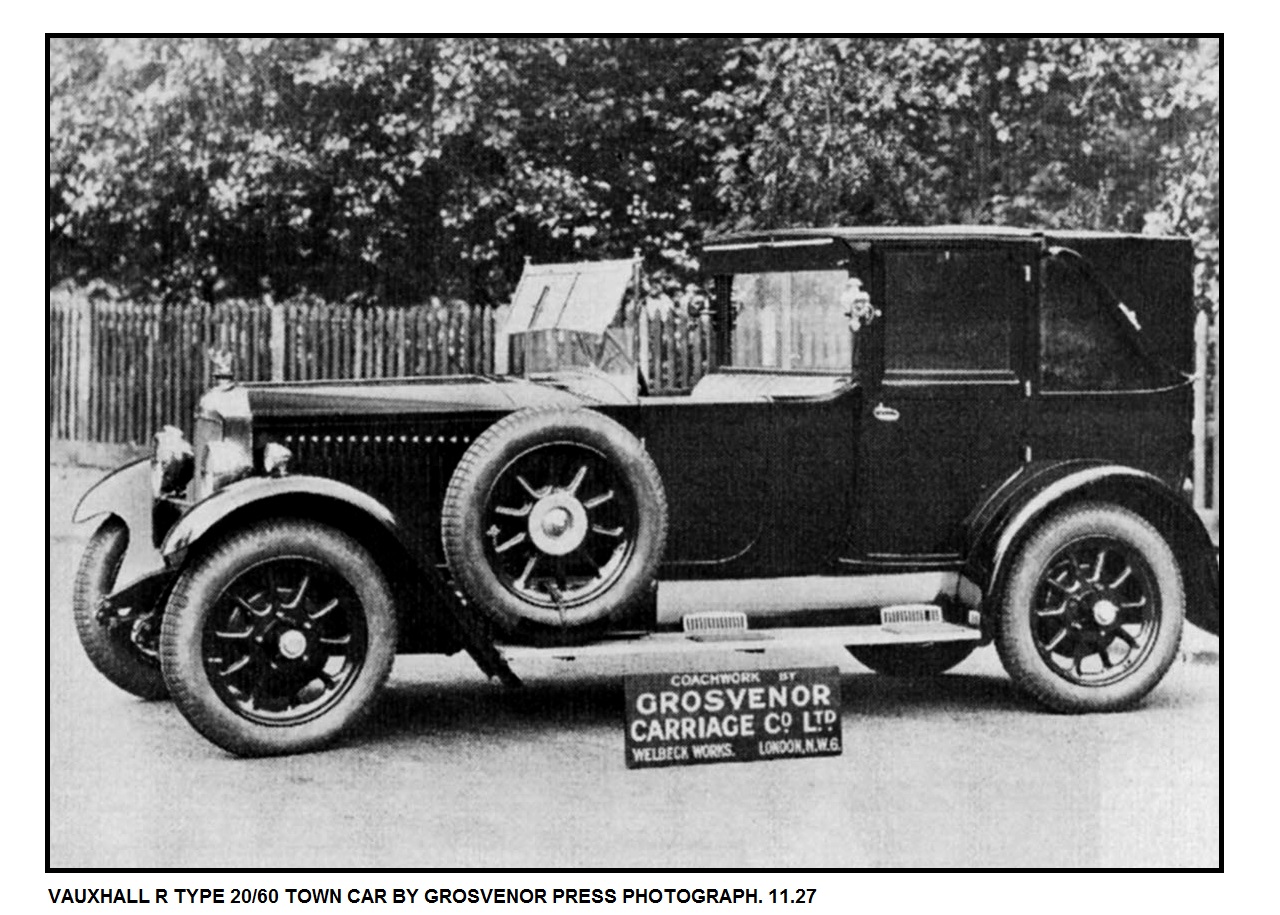
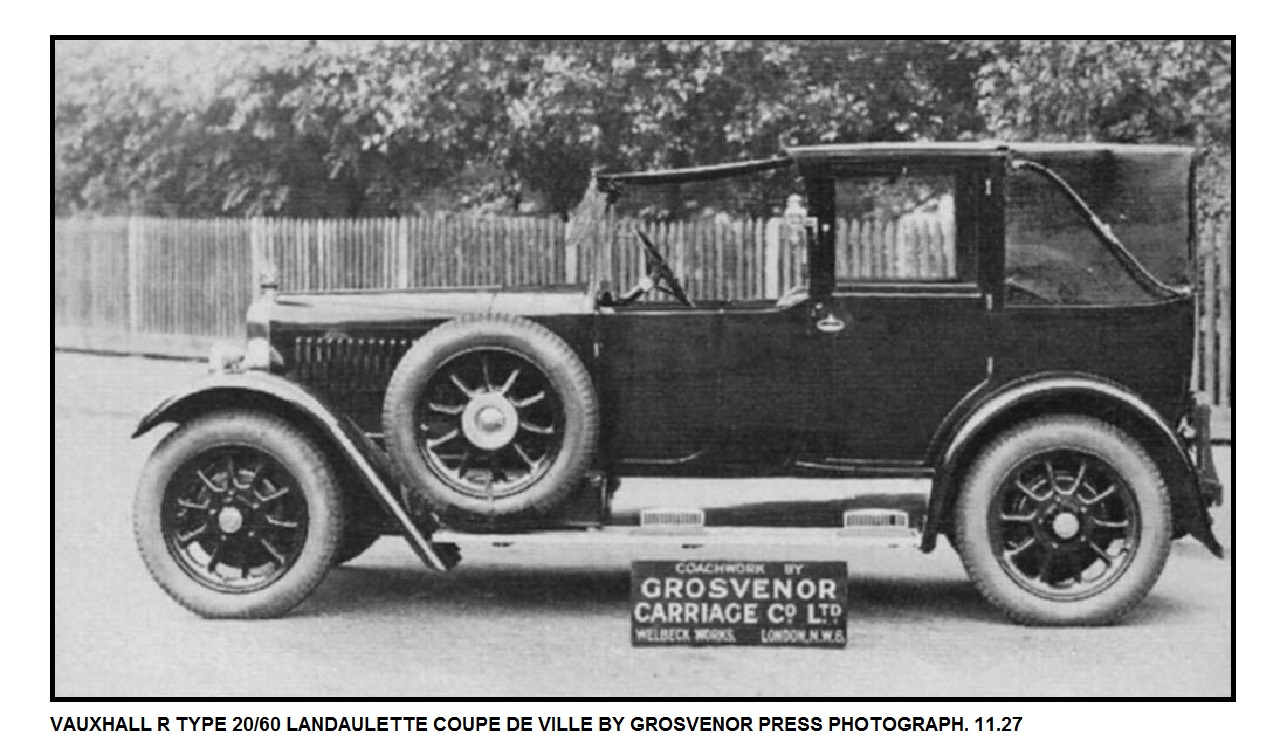
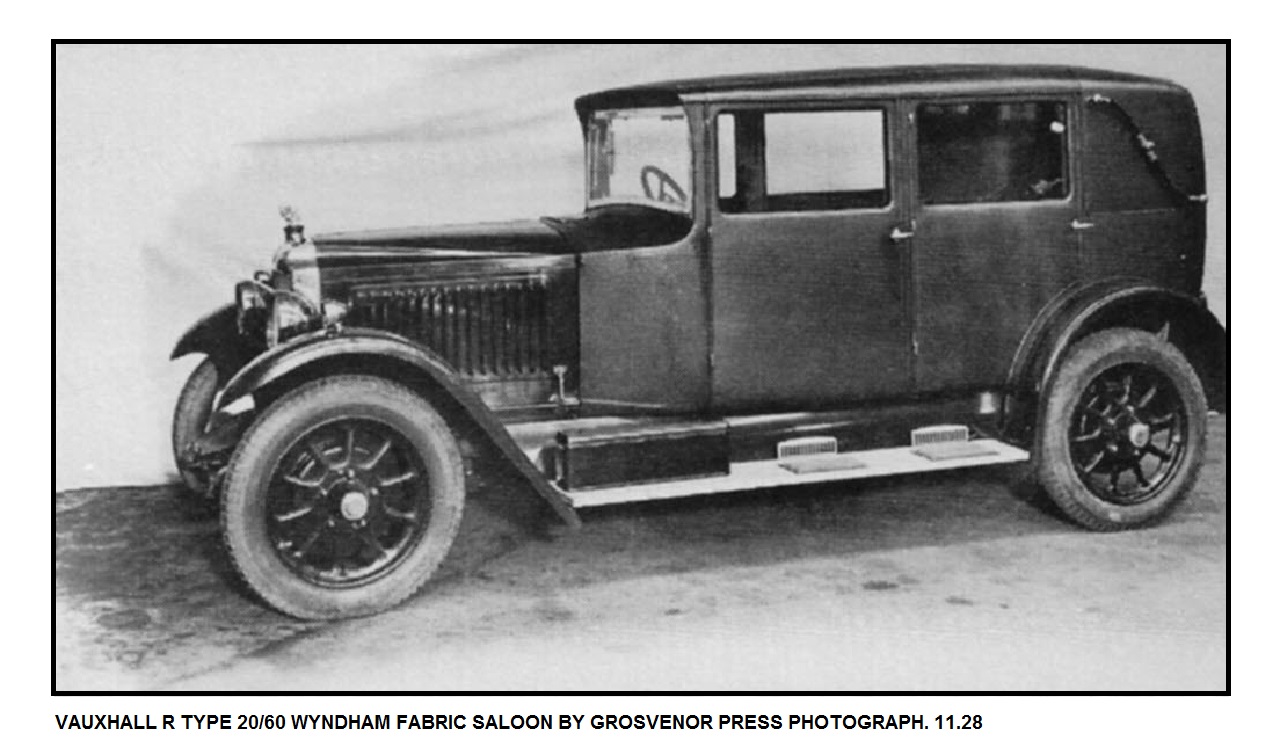
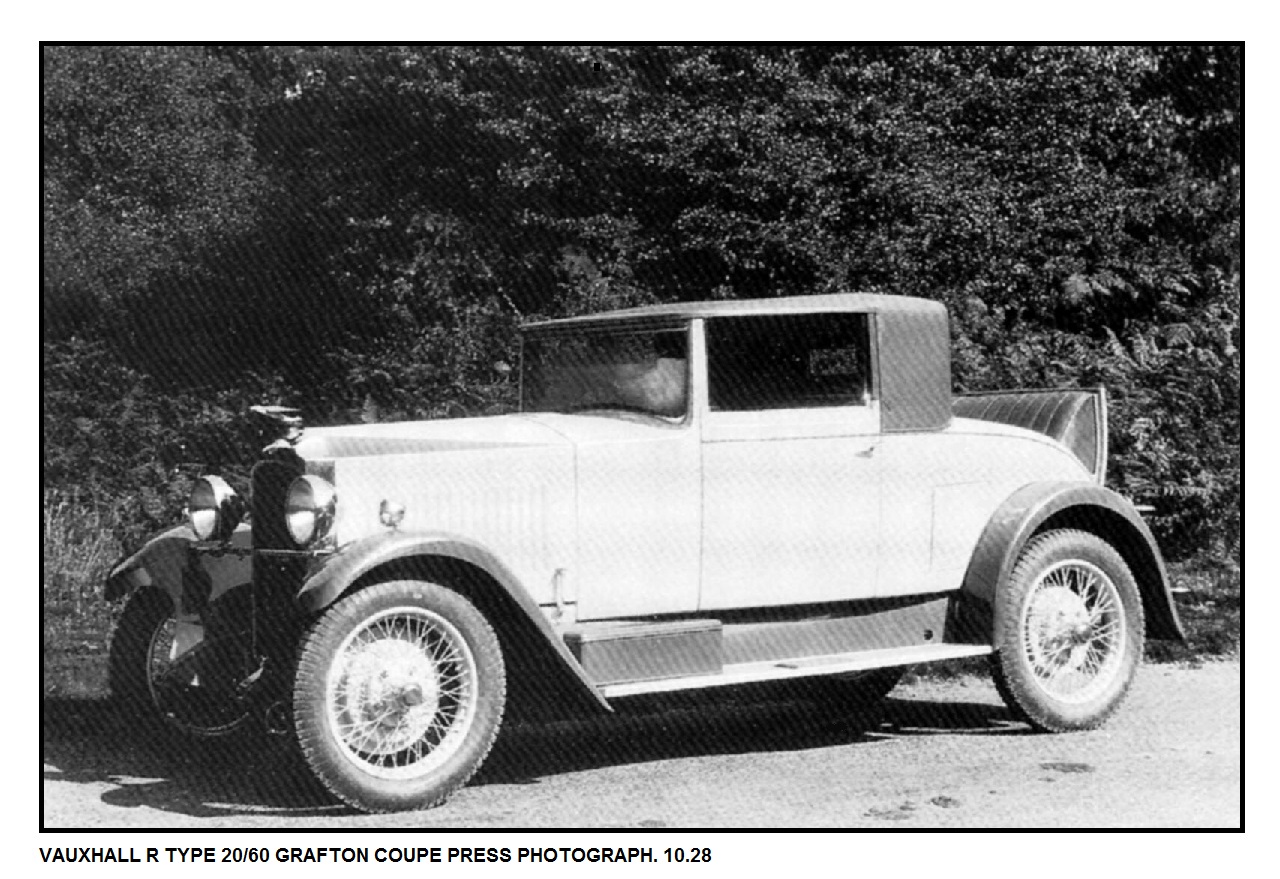
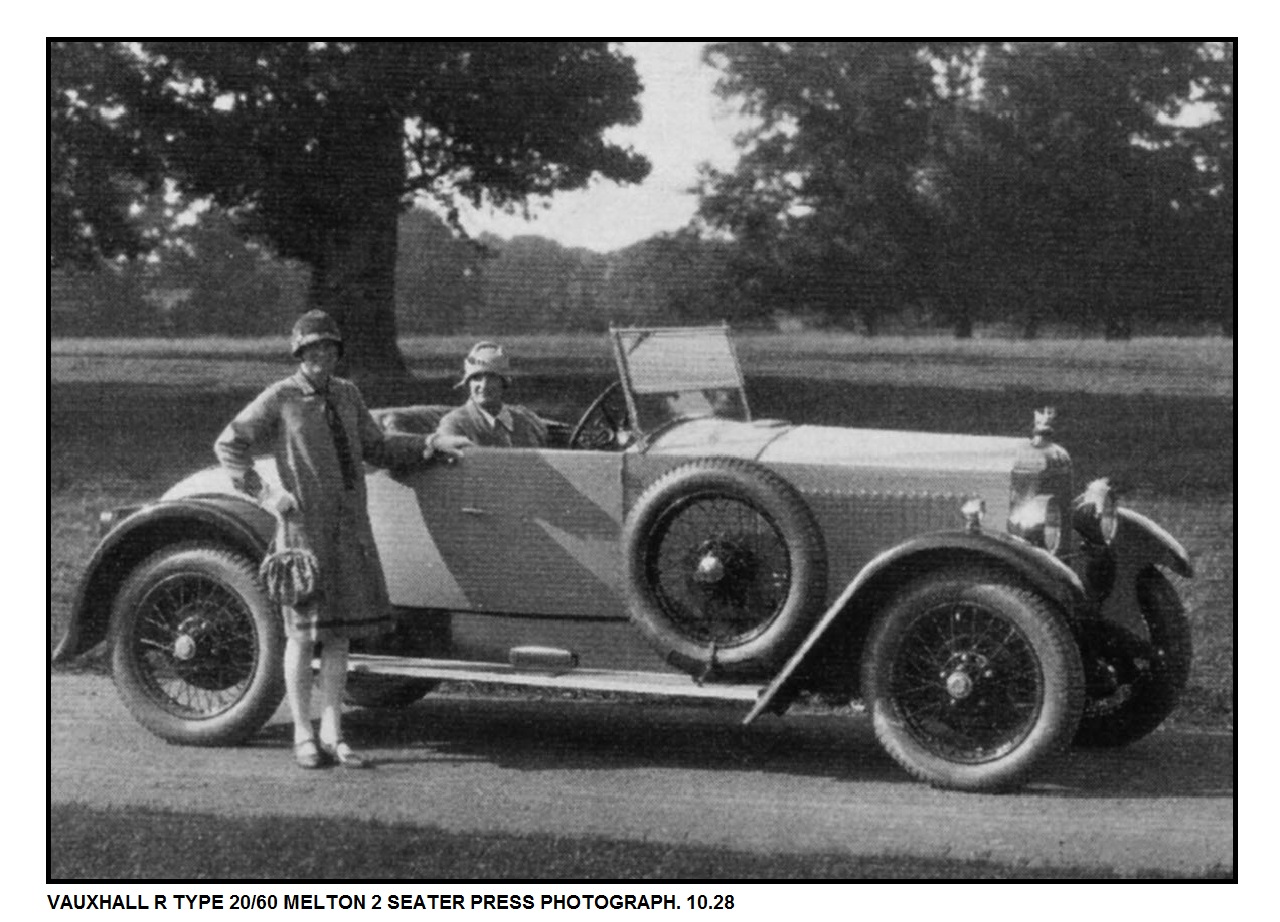
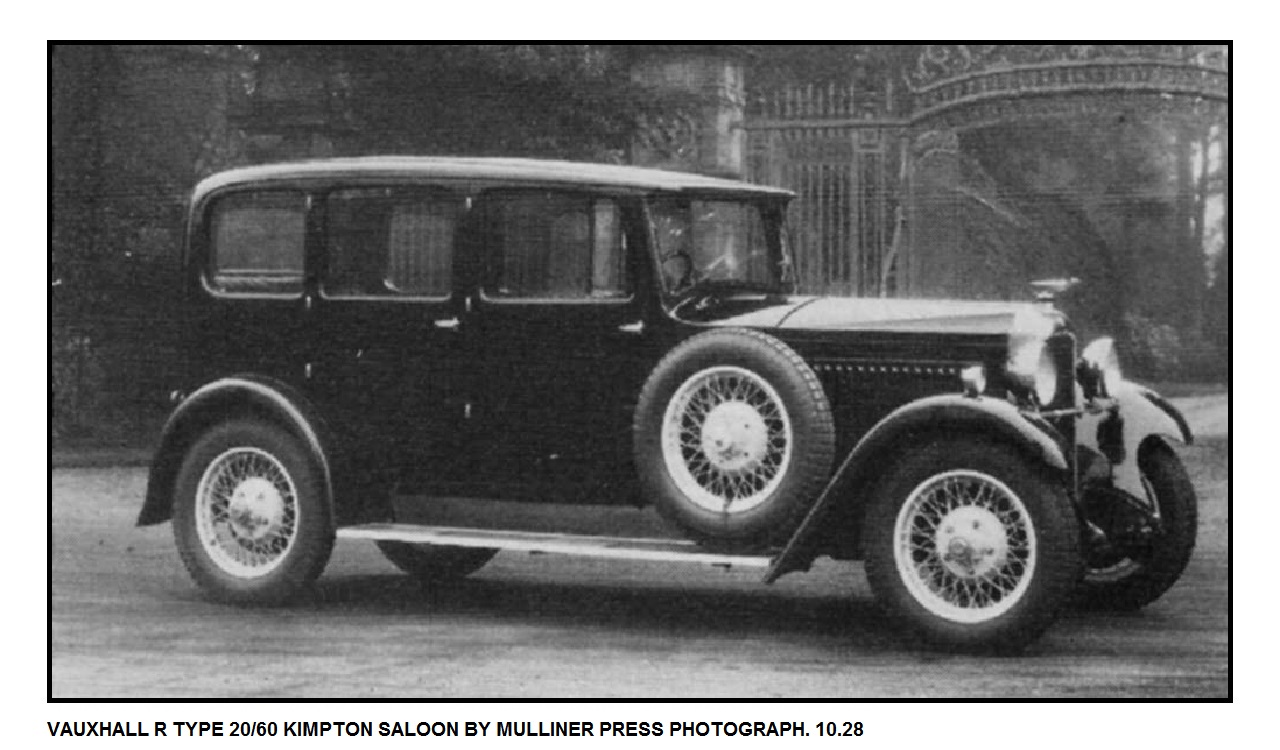
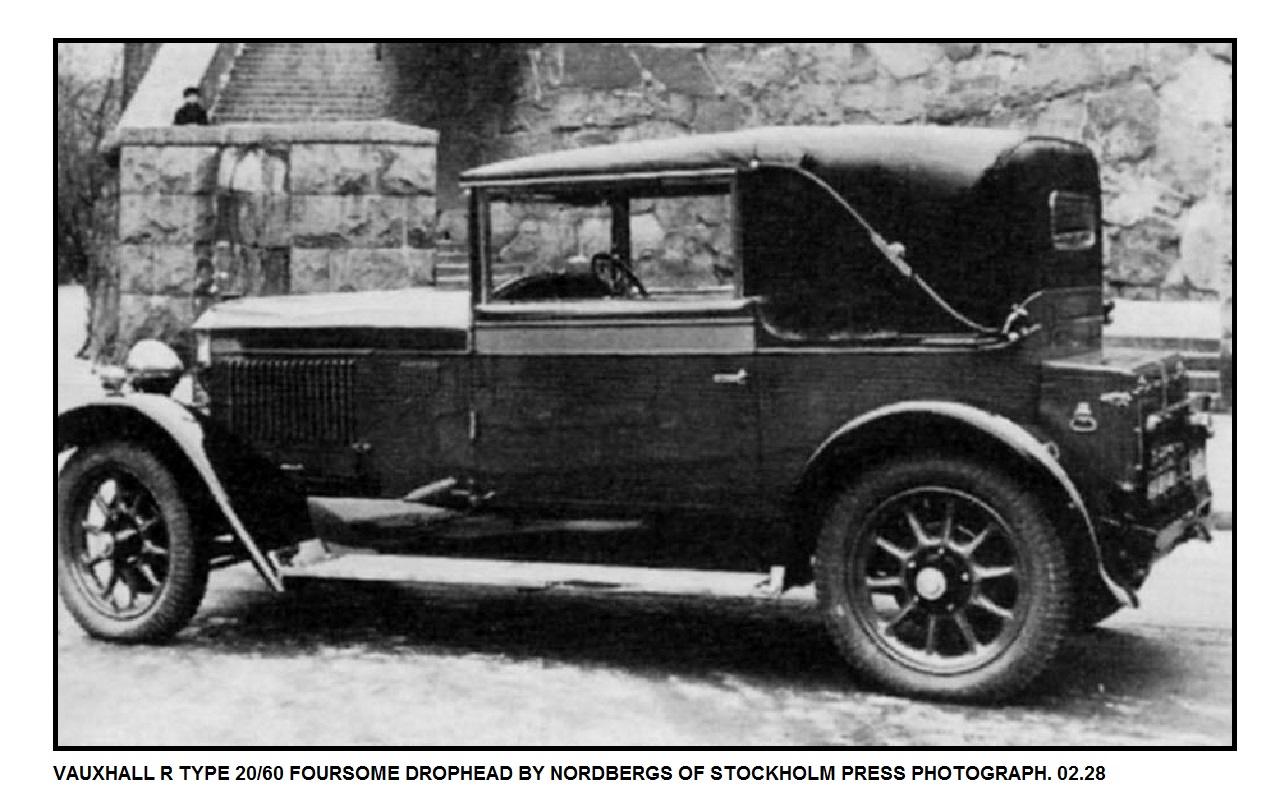
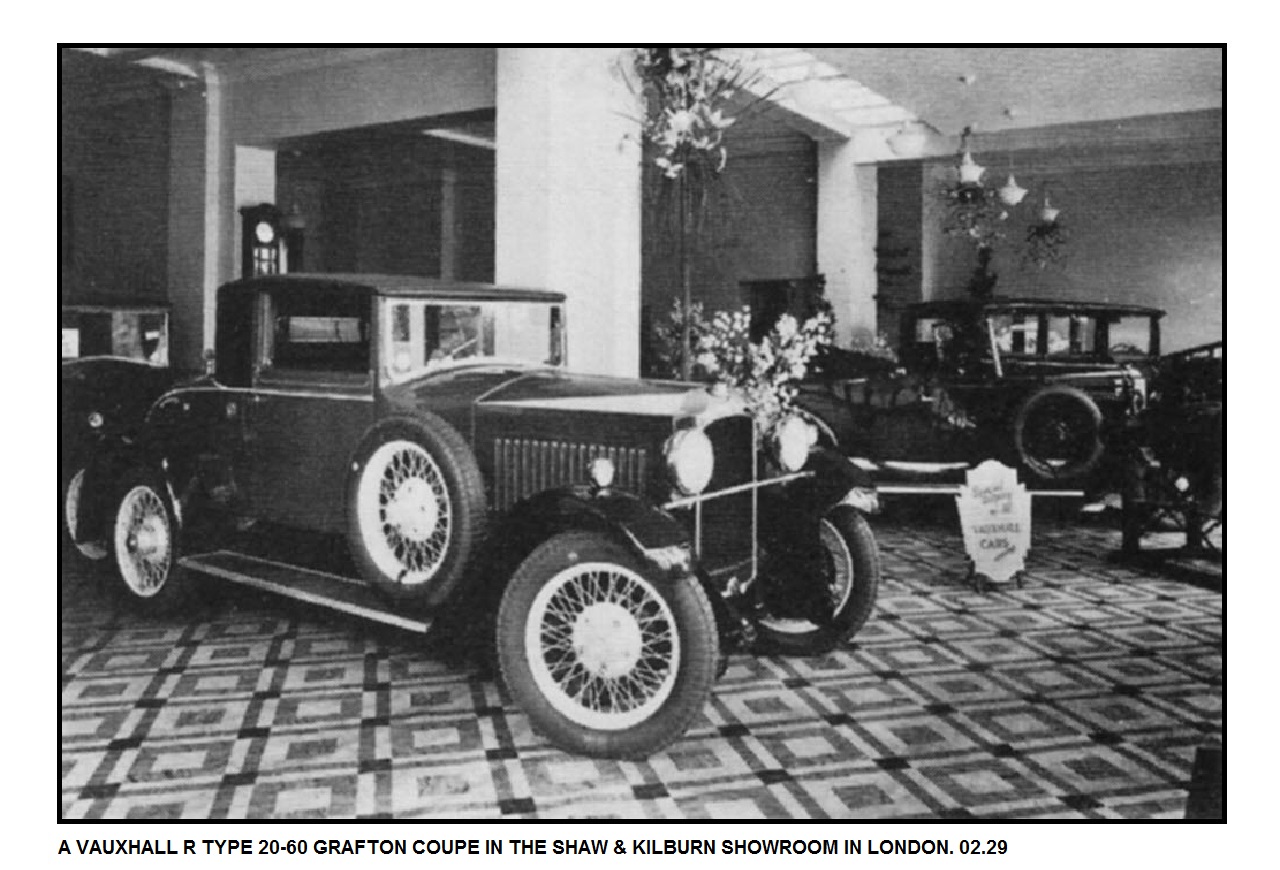


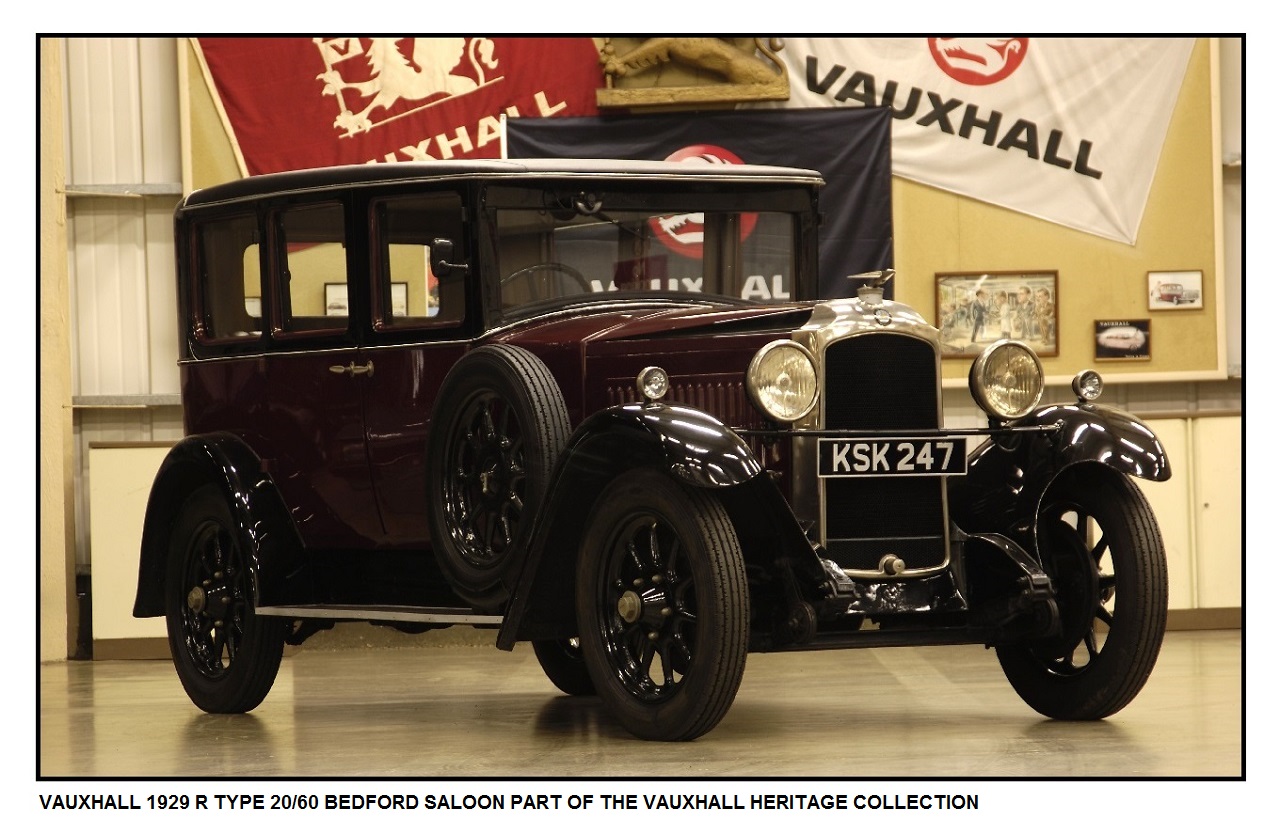
VAUXHALL
T TYPE - 20-60:

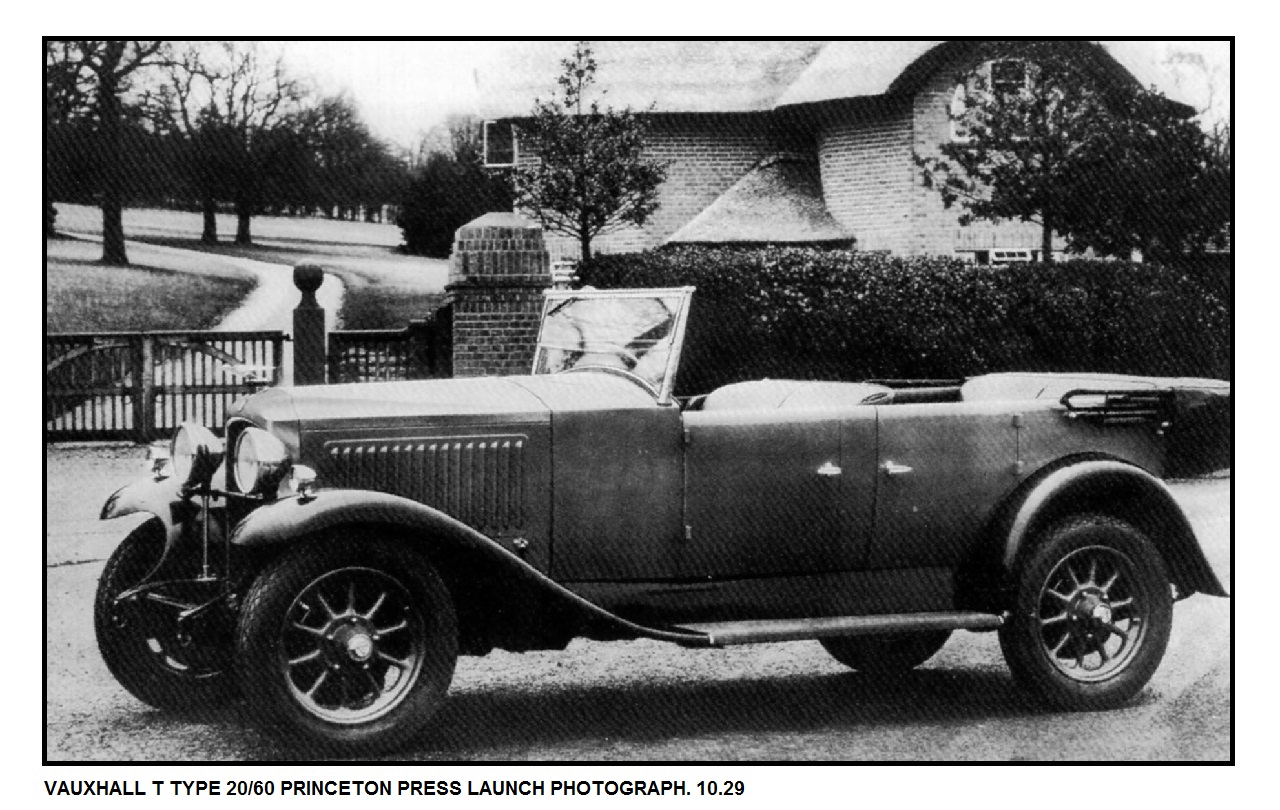

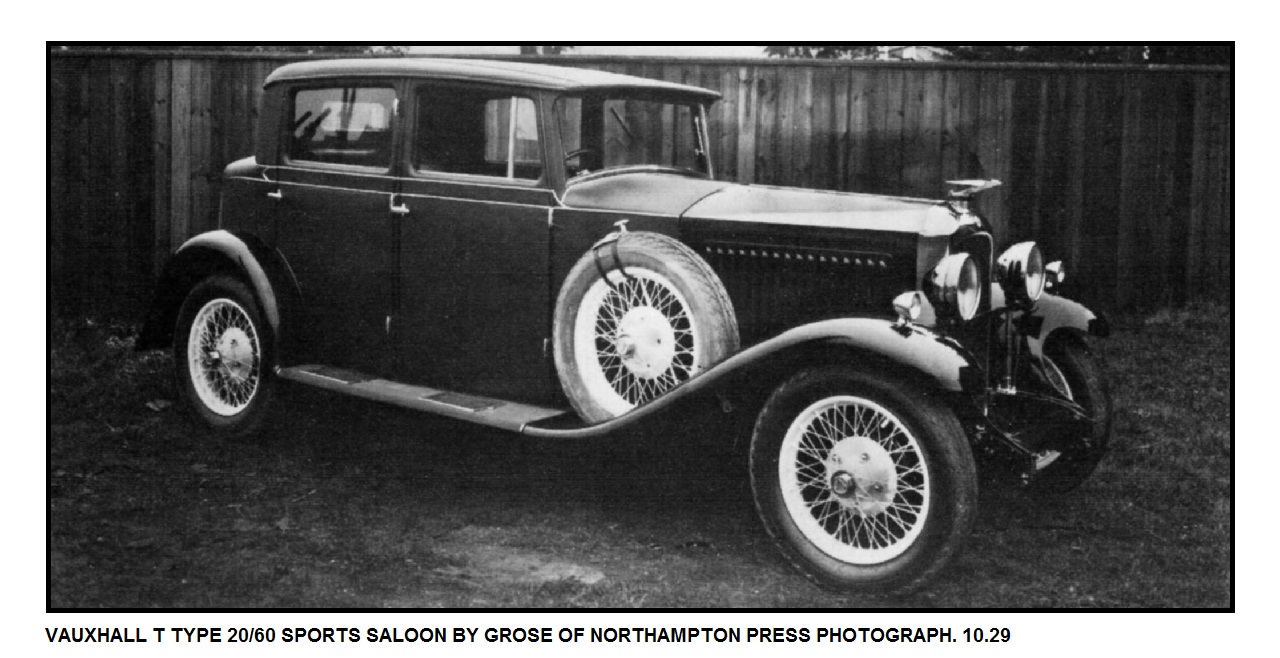

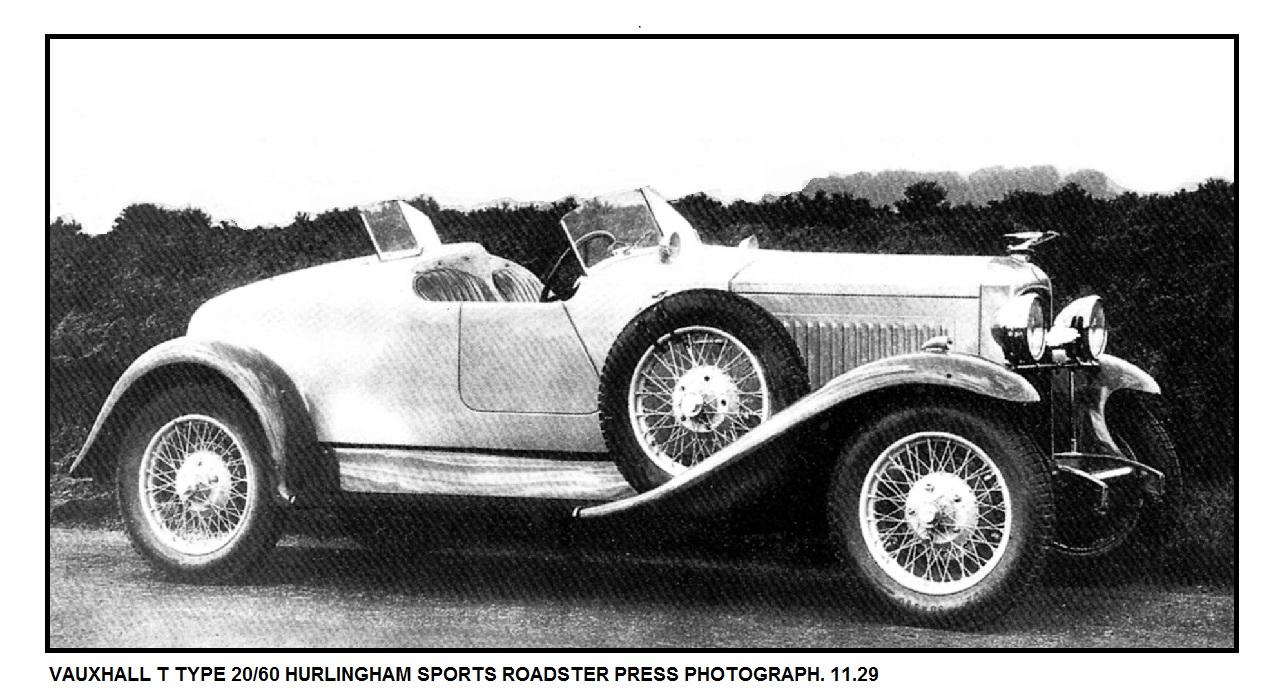
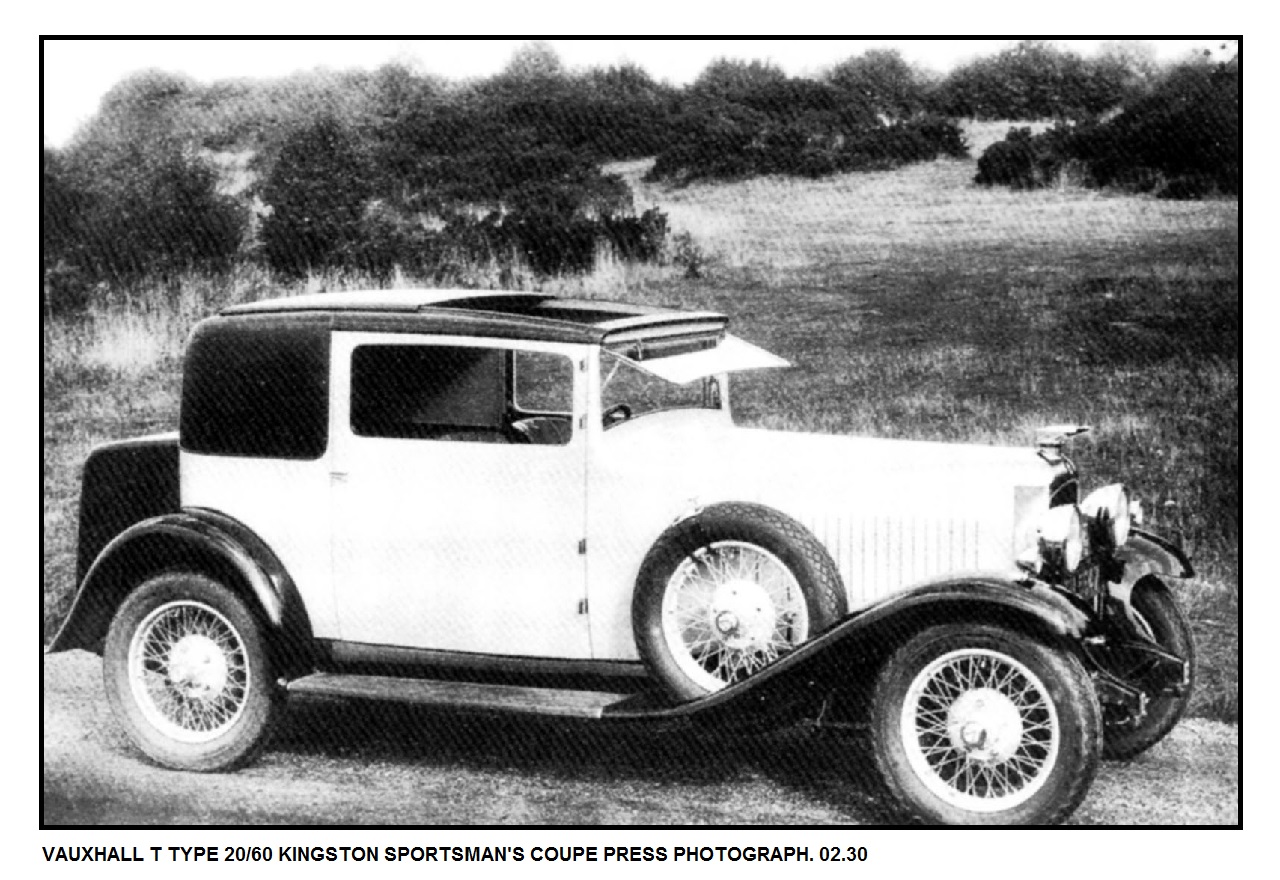
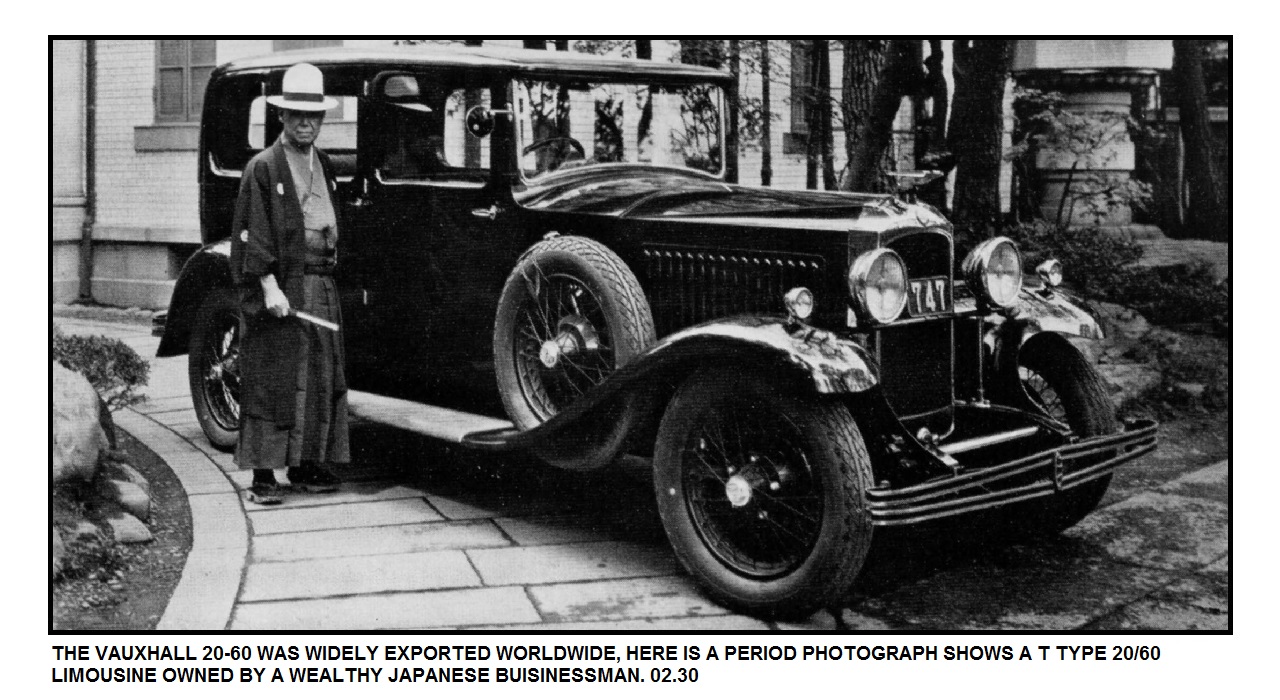



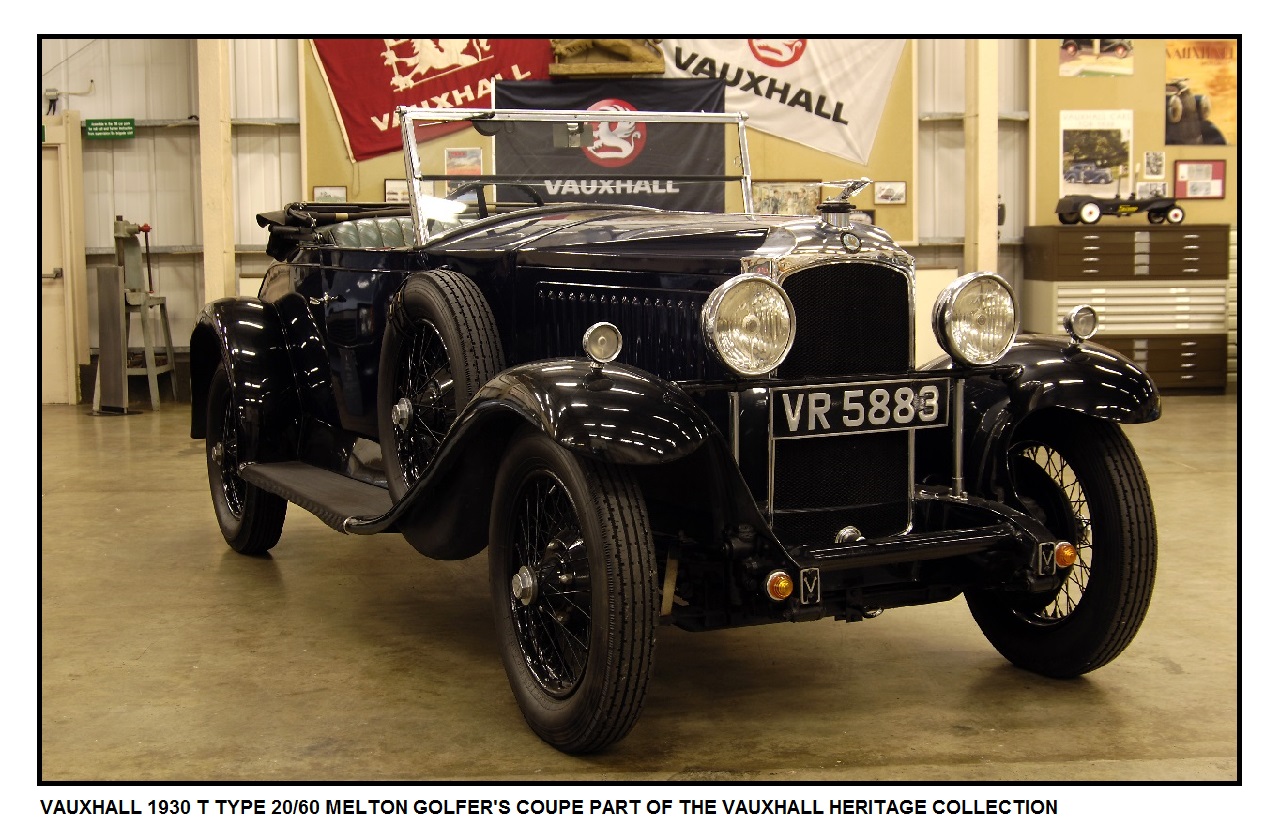
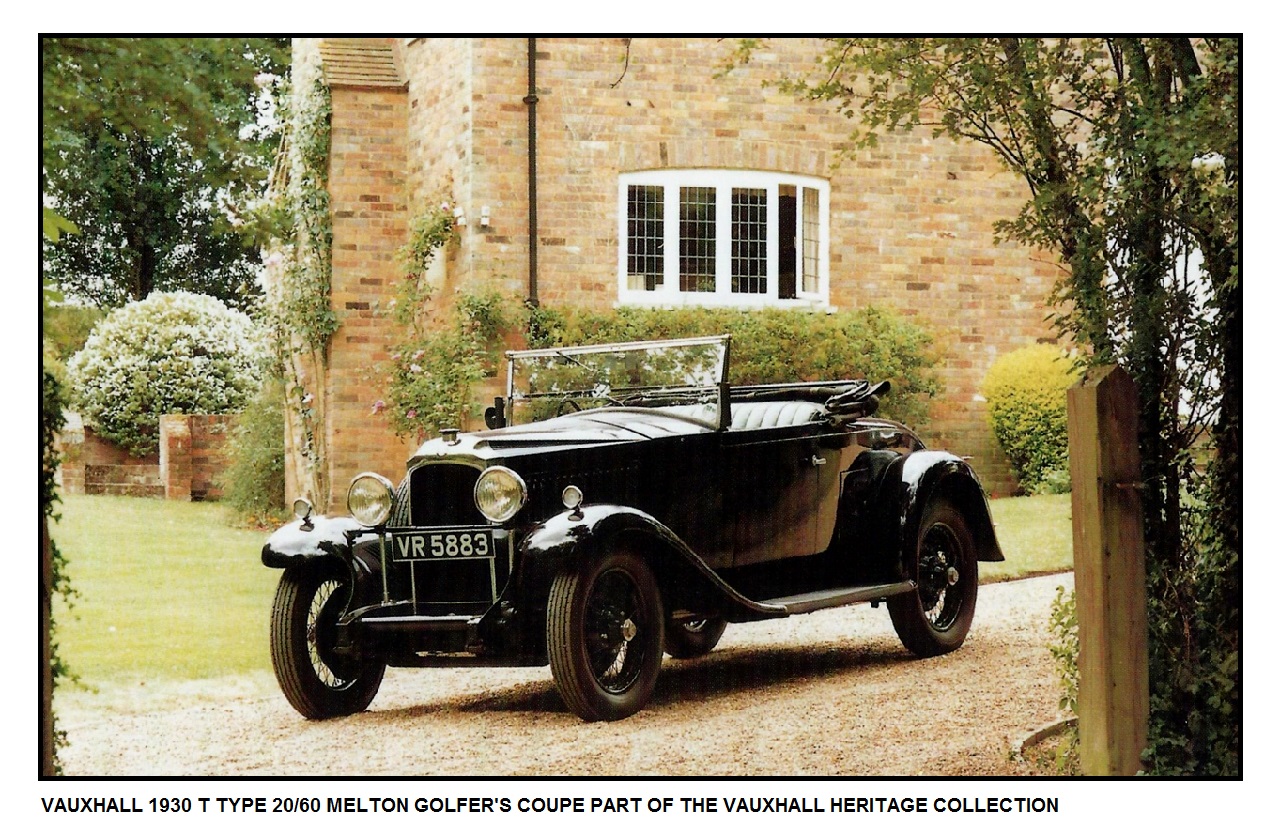
VAUXHALL T TYPE - T EIGHTY:
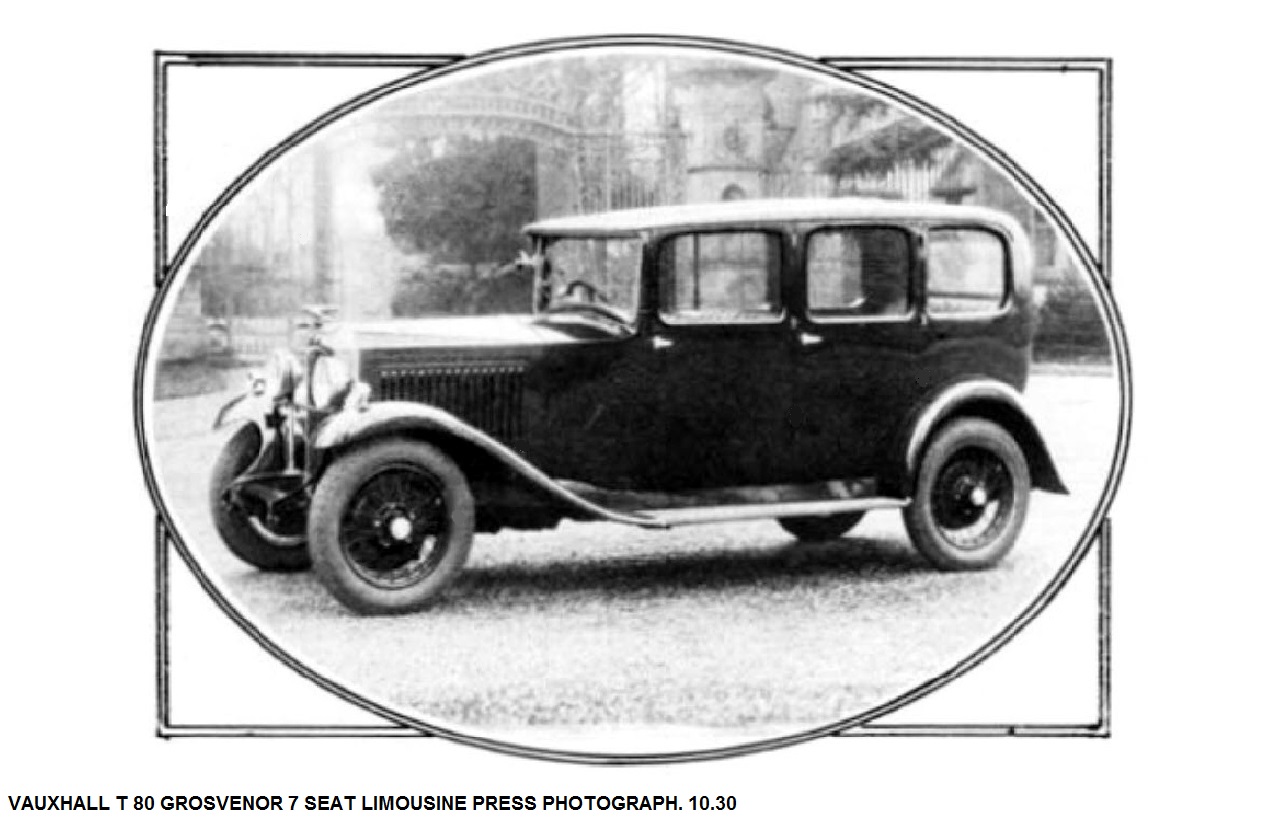


VAUXHALL T TYPE - SILENT 80:
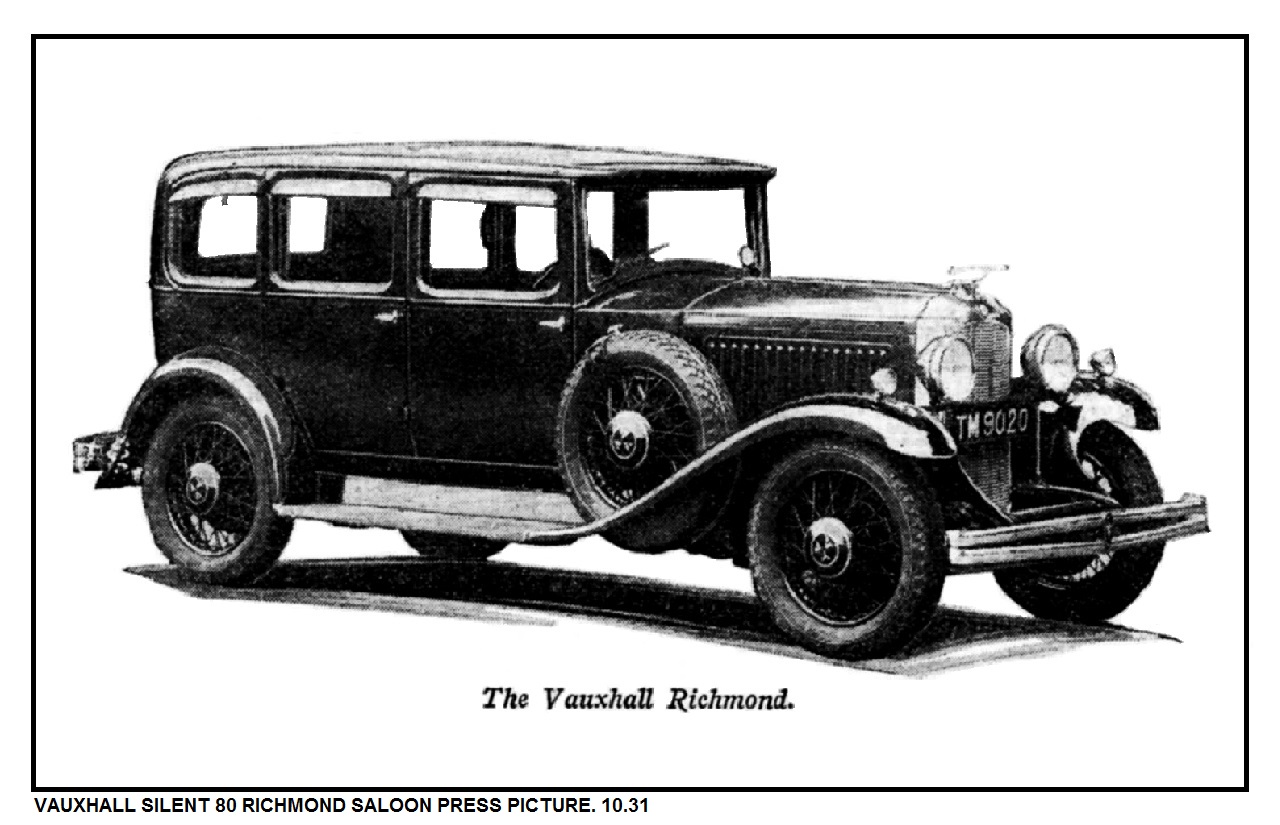
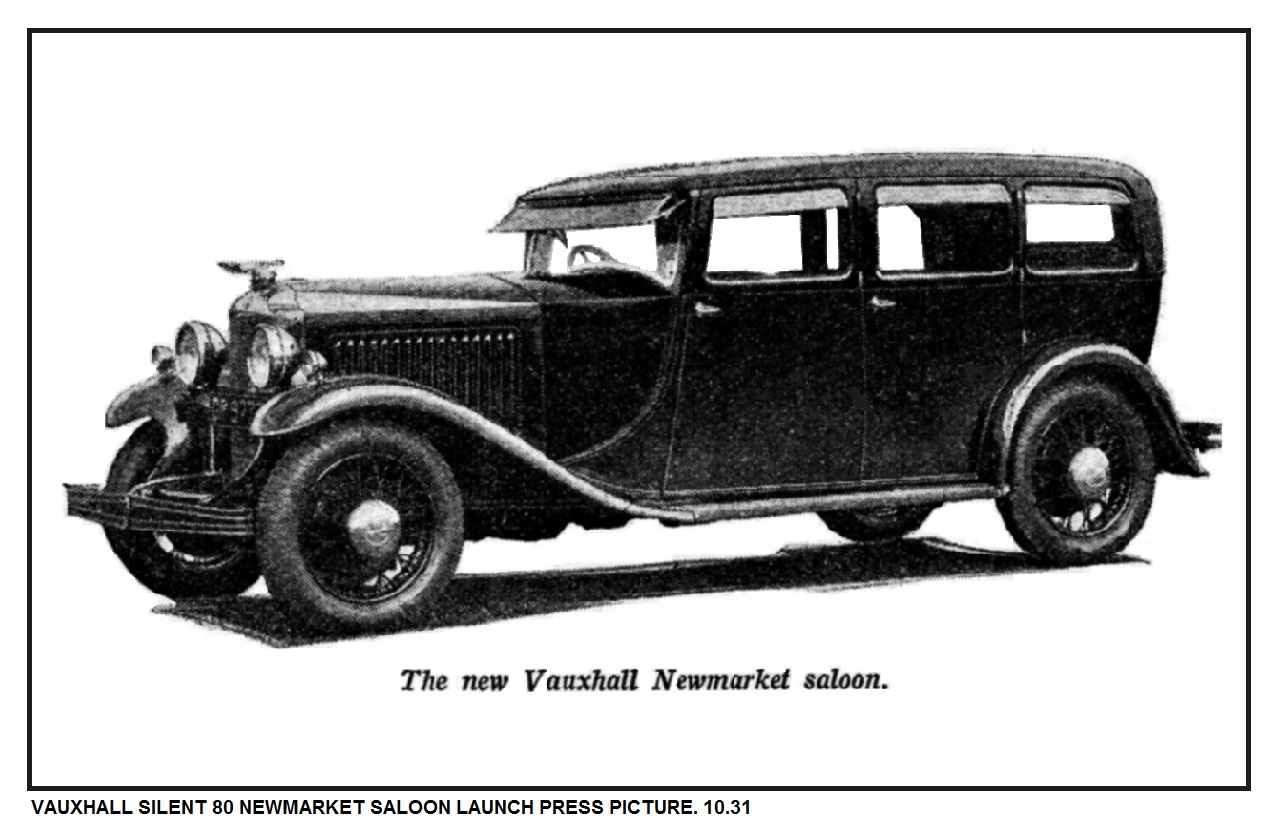
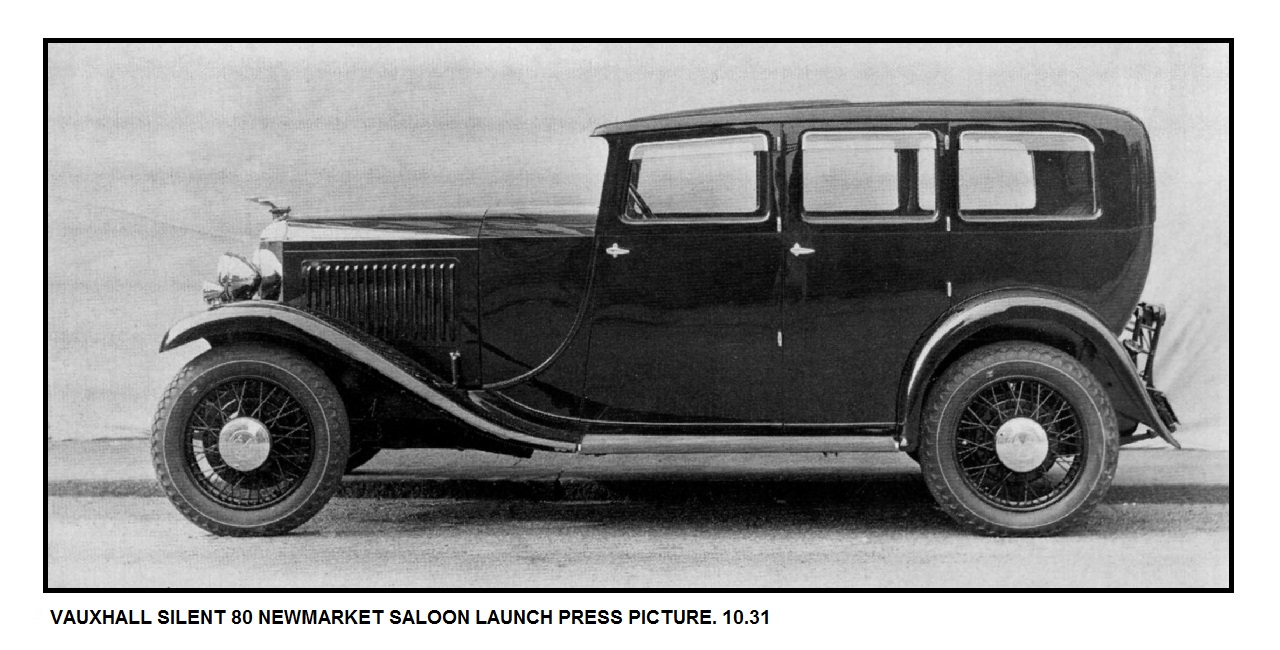

5. VAUXHALL R & T TYPE - 20-60, T80 & SILENT 80 BROCHURES:
VAUXHALL R TYPE - 20-60:






VAUXHALL T TYPE - 20-60:



VAUXHALL - T TYPE 20-60:

VAUXHALL T - EIGHTY:

VAUXHALL T - EIGHTY:





